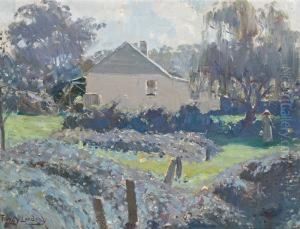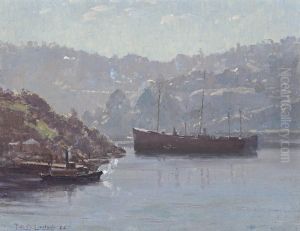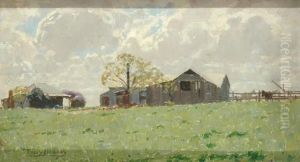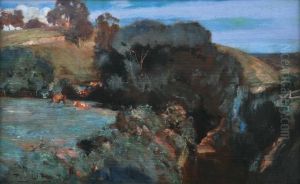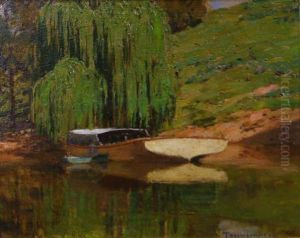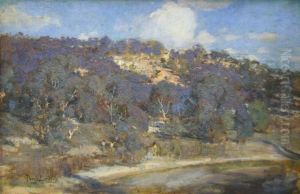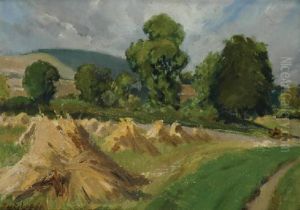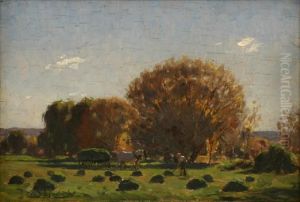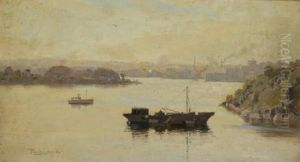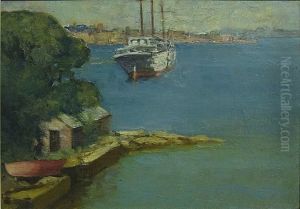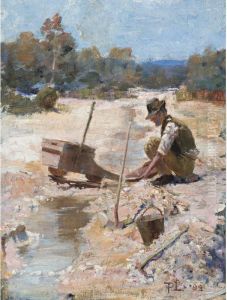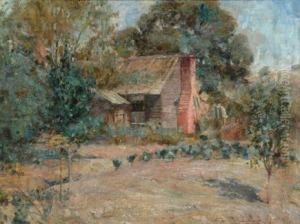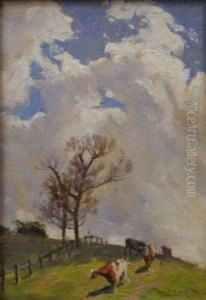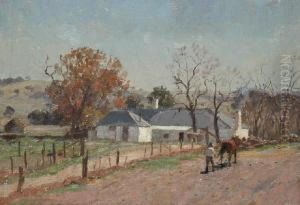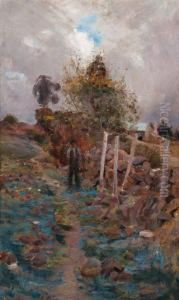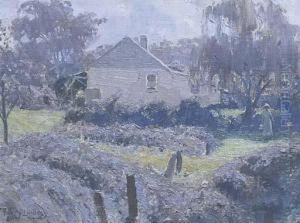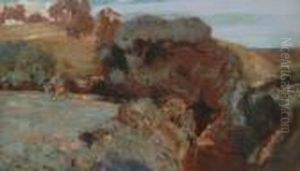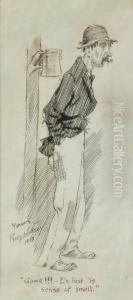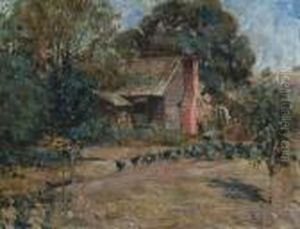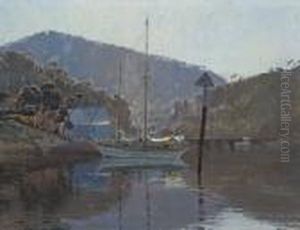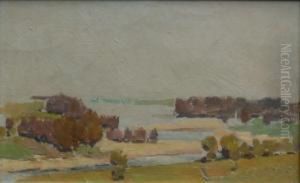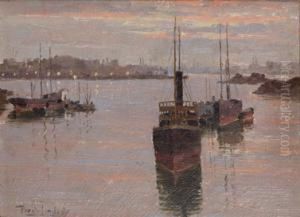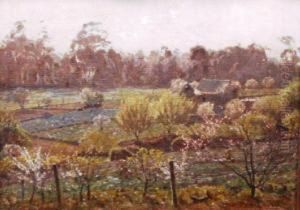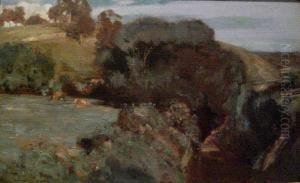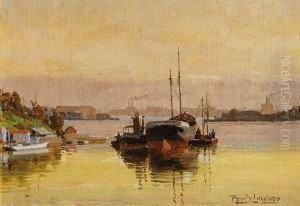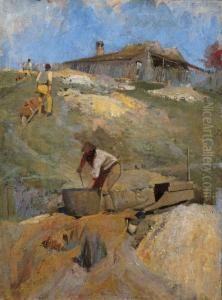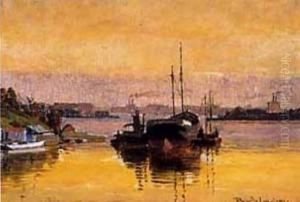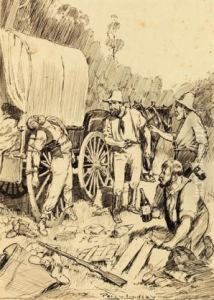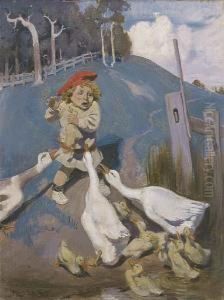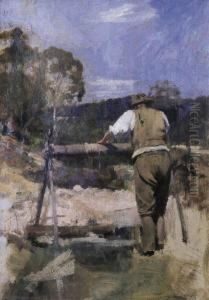Percival Ch., Percy Lindsay Paintings
Percival Charles Lindsay, commonly known as Percy Lindsay, was an Australian artist born on 17 September 1870 in Creswick, Victoria. He was part of a prolific artistic family; his brothers Lionel, Norman, and Daryl Lindsay were also accomplished artists. Percy Lindsay is known for his naturalistic landscapes that capture the beauty of the Australian bush.
Percy's artistic talent became evident early on. He was encouraged by his family to pursue his passion for art, which led him to study at the National Gallery of Victoria Art School in Melbourne. There, he was influenced by the works of the Heidelberg School, a movement that is often considered the first significant art movement of Australia. Artists of this school were known for their plein air method of painting, capturing the light and color of the Australian landscape.
Throughout his career, Lindsay focused primarily on watercolor landscapes, which he rendered with a delicate and realistic touch. His works often depicted serene rural scenes, bush landscapes, and occasionally urban settings. His attention to the effects of light and his ability to capture the nuances of the Australian outback made his paintings popular among art lovers.
Percy Lindsay exhibited his works frequently and was a member of several art societies, including the Victorian Artists' Society and the Australian Art Association. His paintings were exhibited in Australia and abroad, earning him recognition and accolades. He was regarded as an important figure in the tradition of Australian landscape painting.
Like his brothers, Percy Lindsay contributed significantly to Australian art, but his life was not without challenges. He faced financial difficulties at times, and the Great Depression affected the demand for his works. However, he continued to paint throughout his life.
Percy Lindsay passed away on 21 September 1952 in Melbourne. His legacy lives on through his paintings, which continue to be appreciated for their depiction of the Australian landscape and for their role in the development of Australian art. Percy's works are held in various public and private collections, and they stand as a testament to his skill and dedication to his craft.
